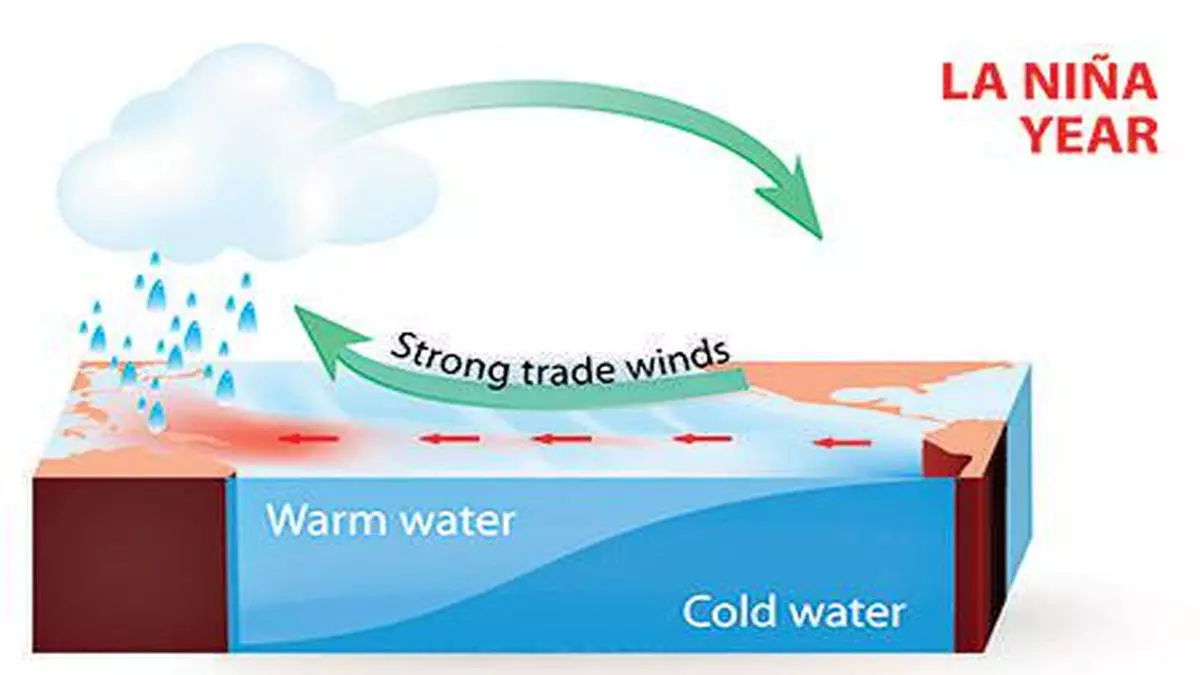‘La Nina watch’ no guarantee for the weather event to emerge, says Australian weather agency
Australia’s Bureau of Meteorology (BoM) has said the “La Nina” watch declared by it a couple of weeks ago does not guarantee that the weather event that results in widespread rains in Asia, particularly India, will develop.
In its climate driver update on Tuesday, the Australian weather agency said four of seven models suggest sea surface temperatures (SSTs) are likely to remain at neutral ENSO levels, with the remaining three models showing SSTs cooling to La Niña levels from August.
“The El Niño–Southern Oscillation (ENSO) is currently neutral. However, the Bureau’s ENSO Outlook is at La Niña Watch, due to some early signs that an event might form in the Pacific Ocean later in 2024,” it said.
Equal chance for ENSO neutral
But the “La Niña Watch does not guarantee that a La Niña will develop”. “There is about an equal chance of neutral ENSO conditions in the same outlook period,” BoM said.
However, in its outlook for June-November 2023, the APEC Climate Centre issued a “La Niña Watch”. It said the index is expected to be -0.1℃ in June 2024 and gradually decrease to -1.1℃ in November 2024.
Also read: IMD uses AI, machine learning to enhance weather forecasts
“The probability for ENSO neutral conditions is expected to be 52 per cent for June – August 2024 and then decrease. Meanwhile, the chance for La Niña conditions is expected to gradually increase and then become dominant (~57%) for September – November 2024,” it said.
The APEC Climate Centre has predicted – in line with the India Meteorological Department forecast – an enhanced probability for above-normal precipitation for the western Indian Ocean, the Arabian Sea, India, the Bay of Bengal and Indonesia.
El Nino ‘transitioning’
Meanwhile, the Climate Prediction Center (CPC), an arm of the US National Oceanic and Atmospheric Administration (NOAA), said in its weekly update that El Nino, which emerged in June 2023, is transitioning toward ENSO-neutral.
“A transition from El Niño to ENSO-neutral is likely next month. La Niña may develop in June-August 2024 (49% chance) or July-September (69% chance),” CPC said.
The CPC view contrasts the Bureau of Meteorology, which said in April that drought-bearing El Nino had ended.
The US weather agency said since mid-March 2024, below-average SSTs had emerged in the eastern Pacific and expanded slightly westward.
Also read: Onset of Indian monsoon unlikely to be affected by Cyclone Remal
BoM said SSTs in the central Pacific have been steadily cooling since December 2023. This surface cooling is supported by a significant amount of sub-surface cooling in the central and eastern Pacific. Recent cloud and surface pressure patterns are ENSO-neutral, it said.
IOD neutral
“Climate models suggest that SSTs in the central tropical Pacific will likely continue to cool over the coming months,” the weather agency said.
The Australian weather agency said the Indian Ocean Dipole (IOD) or “Indian Nino” is currently neutral. The most recent 4 weeks have seen the IOD index within neutral thresholds, with the latest week just below the positive IOD threshold (+0.40 °C).
Global sea surface temperatures (SSTs) have been the warmest on record for each month between April 2023 and April 2024, with May 2024 SSTs on track to exceed May 2023.
“The global pattern of warmth is affecting the typical historical global pattern of sea surface temperatures associated with ENSO and IOD. As the current global ocean conditions have not been observed before, historical comparisons based on past ENSO or IOD events may not be reliable,” it said.
